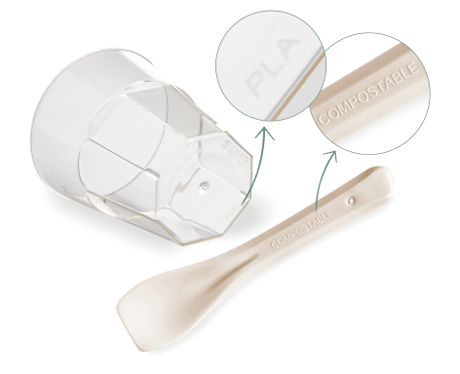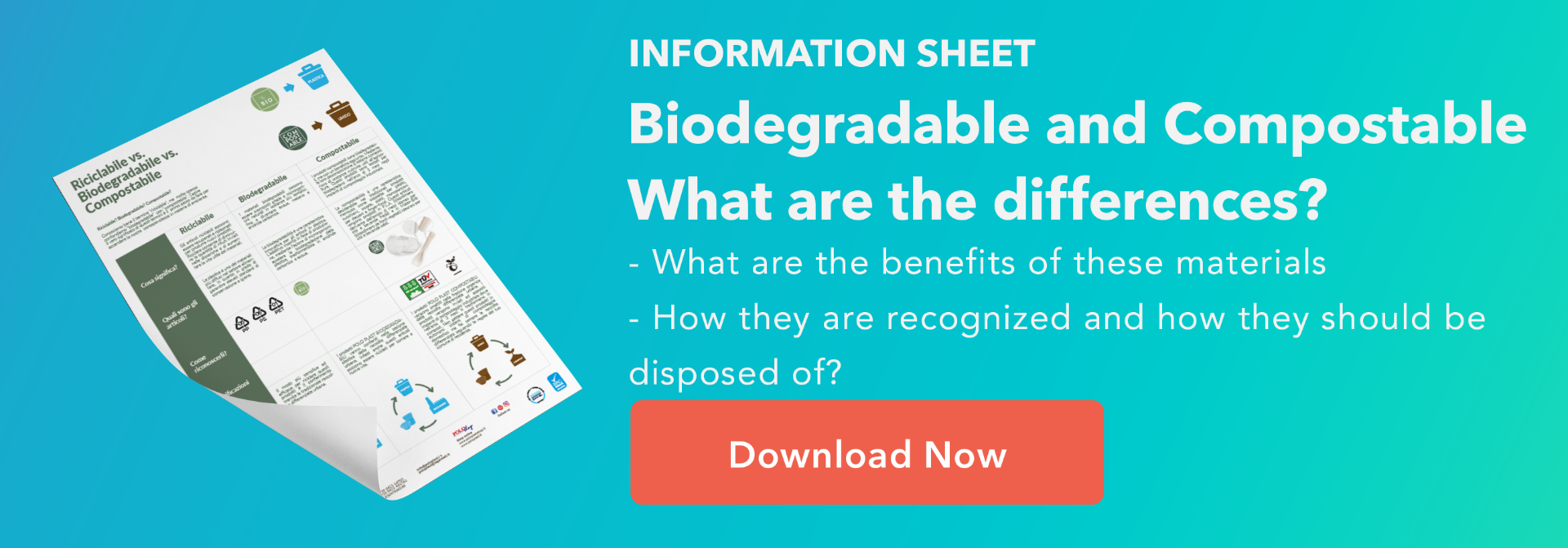Differences between Compostable and Biodegradable
Compostable or Biodegradable?
Biodegradability and compostability: these two terms have now entered our everyday lives. Do we really know what they mean? Are they synonymous or do they indicate different concepts? Let's find out together.
We often confuse "biodegradable" with "compostable", but the meaning is not the same. Knowing the true meaning of these terms is the first step to raise our environmental awareness.
The difference between a biodegradable and a compostable material lies in the times of degradation: a compostable material disintegrates in less than 3 months if in contact with other organic residues while for a biodegradable material 90% of the material decomposes within 6 months.Biodegradability is the ability of the material to be broken down by natural microorganisms.
Compostability takes advantage of biodegradability, so a compostable material is always biodegradable, but the opposite is not true.
Biodegradable items
Organic materials that can be broken down by natural microorganisms into simpler substances are biodegradable, becoming water, methane and carbon dioxide.
In Polo Plast Biodegradable items there is an additive (ECM BIO) that promotes the BIO-degradation of plastic, through the action of microorganisms such as bacteria and fungus that, combined with environmental action, turn it into carbon dioxide and water.
Biodegradable Polo Plast items must be recovered in the PLASTIC section of the recycling, in order to be recycled.

Compostable Items
Those organic materials that, through the composting process, are transformed into compost are compostable. Compost, therefore, is the result, properly sanitized and stabilized, of aerobic biodegradation of organic waste. The mature compost that you get looks like a soil and is very rich in nutrients useful to agriculture.Therefore it is also reused as a natural fertilizer in organic crops.
According to European legislation (UNI EN 13432), a product can only be labelled 'compostable' if it is 90 per cent biodegradable within only three months if in contact with other organic residues and has passed ecotoxicity tests, i.e. it does not exert any negative effects on the environment.
Compostable Polo Plast items are suitable for recovery in common industrial composting plants, taking advantage of certain oxygen, temperature and pressure conditions.
Domestic composting, on the other hand, is a more complicated and slower-paced process, as the temperatures of the compost in the garden are lower and less constant.
For this reason, Compostable Polo Plast items should be recovered exclusively in the organic section of normal urban collection.
What materials are used for compostable items?
P.L.A.
P.L.A. or polylactic acid is a biopolymer derived from corn starch, compostable according to European regulation EN13432. This material is transparent and holds up to a temperature of 35° C.It is used to produce spoons, cups, glasses, lids, single portions for desserts and finger-food with similar appearances to plastic products for cold foods and drinks, considering the low resistance to high temperatures.




